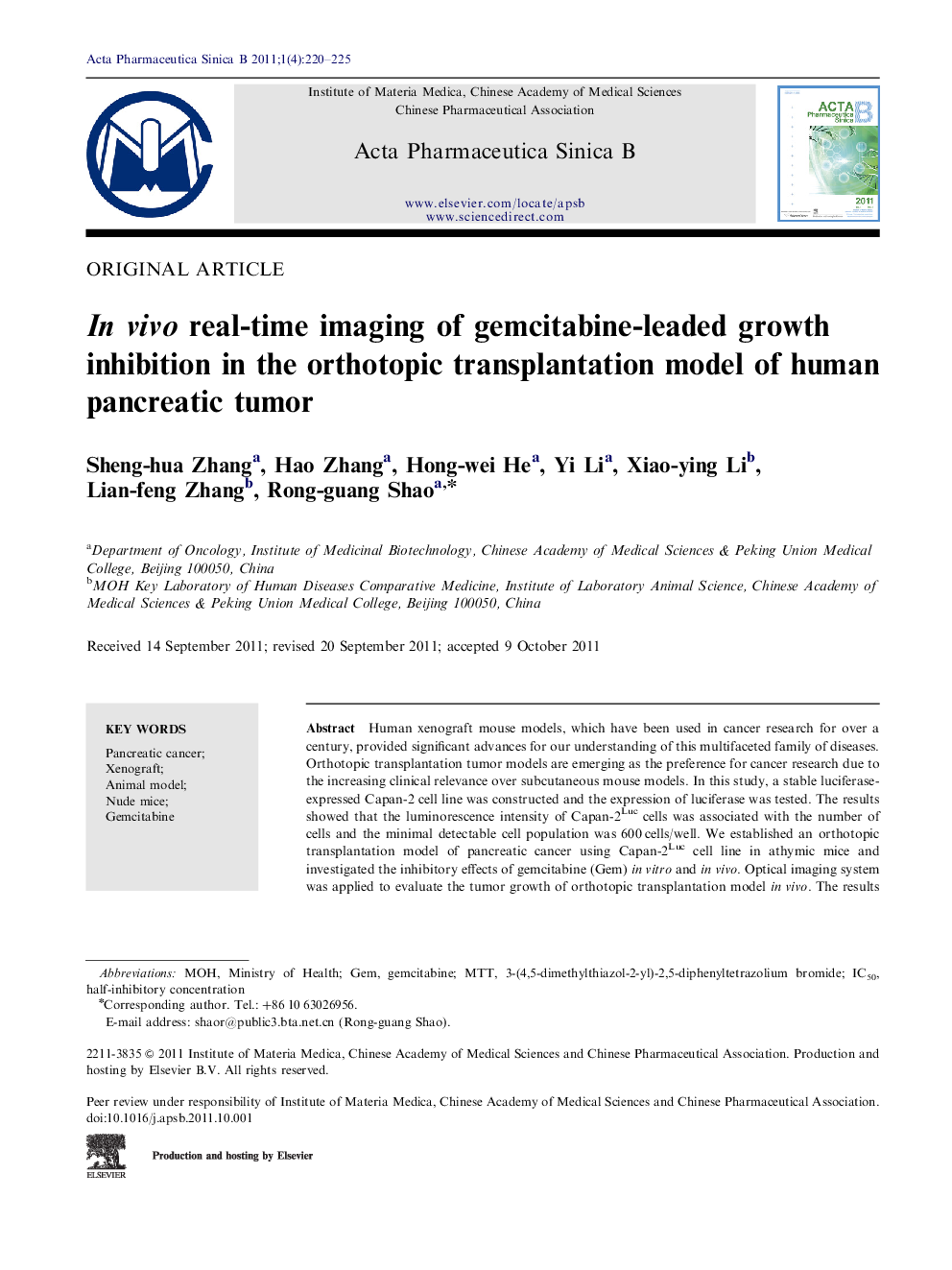| Article ID | Journal | Published Year | Pages | File Type |
|---|---|---|---|---|
| 2474824 | Acta Pharmaceutica Sinica B | 2011 | 6 Pages |
Human xenograft mouse models, which have been used in cancer research for over a century, provided significant advances for our understanding of this multifaceted family of diseases. Orthotopic transplantation tumor models are emerging as the preference for cancer research due to the increasing clinical relevance over subcutaneous mouse models. In this study, a stable luciferase-expressed Capan-2 cell line was constructed and the expression of luciferase was tested. The results showed that the luminorescence intensity of Capan-2Luc cells was associated with the number of cells and the minimal detectable cell population was 600 cells/well. We established an orthotopic transplantation model of pancreatic cancer using Capan-2Luc cell line in athymic mice and investigated the inhibitory effects of gemcitabine (Gem) in vitro and in vivo. Optical imaging system was applied to evaluate the tumor growth of orthotopic transplantation model in vivo. The results suggested that the orthotopic transplantation model of pancreatic cancer was well established and the luminorescence intensity of Gem-treated group was markedly lower than that of control group with an inhibitory rate of 56.8% (P<0.001). Our orthotopic transplantation model of pancreatic cancer and real-time imaging observation method established in this study could be an ideal model and a useful tool for therapeutic approaches for pancreatic cancers.
Graphical abstractAn orthotopic transplantation tumor models with stable luciferase-expressed Capan-2 cell line was established to be an ideal model and a useful tool for therapeutic approaches for pancreatic cancers.Figure optionsDownload full-size imageDownload as PowerPoint slide
